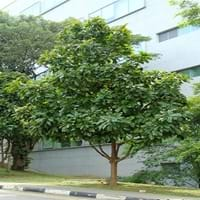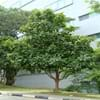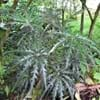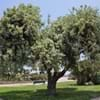Life Span
Perennial
Perennial
Type
Tree
Flowering Plants, Herbaceous Perennial
Origin
Southeastern Asia, India, China
Asia
Types
Not Available
Bowl of Beauty, Laura Dessert
Habitat
Subtropical forests, Tropical Forests
Dappled Shade, Woodland Garden
USDA Hardiness Zone
10-15
4-8
Sunset Zone
H1, H2, 24
A3, 1a, 1b, 2a, 2b, 3a, 3b, 4, 5, 6, 7, 8, 9, 10, 11, 12, 13, 14, 15, 16, 17, 18, 19, 20, 22
Habit
Spreading
Clump-Forming
Flower Color
Ivory
White, Light Pink
Flower Color Modifier
Bicolor
Bicolor
Fruit Color
Green, Yellow green, Brown
Not Available
Leaf Color in Spring
Dark Green
Red, Dark Green, Bronze
Leaf Color in Summer
Dark Green
Green, Dark Green
Leaf Color in Fall
Dark Green
Green, Dark Green, Bronze
Leaf Color in Winter
Dark Green
Not Available
Leaf Shape
Oblong or Lanceolate
Lance shaped
Plant Season
Spring, Summer, Fall, Winter
Spring, Summer
Sunlight
Full Sun, Partial Sun
Full Sun, Partial Sun
Type of Soil
Loam, Sand
Clay, Loam, Sand
The pH of Soil
Acidic, Neutral
Acidic, Neutral, Alkaline
Soil Drainage
Average
Well drained
Bloom Time
Early Summer, Summer, Late Summer
Late Spring, Early Summer
Tolerances
Not Available
Not Available
Where to Plant?
Ground
Ground
How to Plant?
Cuttings, Seedlings
Root Division, Seedlings
Plant Maintenance
Medium
Medium
Watering Requirements
Average Water Needs
Allow soil to be completely dry in between waterings, Water Deeply
In Summer
Lots of watering
Lots of watering
In Spring
Moderate
Moderate
In Winter
Average Water
Average Water
Soil pH
Acidic, Neutral
Acidic, Neutral, Alkaline
Soil Type
Loam, Sand
Clay, Loam, Sand
Soil Drainage Capacity
Average
Well drained
Sun Exposure
Full Sun, Partial Sun
Full Sun, Partial Sun
Pruning
Remove dead branches
Remove damaged leaves, Remove dead branches, Remove dead leaves
Fertilizers
Put diluted fertilizers
5-10-10 fertilizer
Pests and Diseases
Chlorosis, Susceptible to insect pests and moulds
Leaf Blotch, Ringspot virus, Stem rot, Tip blight, Verticillium Wilt
Plant Tolerance
Drought
Drought
Flower Petal Number
Single
Double
Foliage Texture
Coarse
Coarse
Foliage Sheen
Glossy
Glossy
Attracts
Not Available
Ants, Butterflies, Not Available
Allergy
no allergic reactions
no allergic reactions
Aesthetic Uses
Showy Purposes
Cut Flowers, Showy Purposes
Beauty Benefits
Not Available
Not Available
Environmental Uses
Air purification
Air purification
Medicinal Uses
Antibacterial, Antidiabetic, Antifungal, antimicrobial, Astringent, Expectorant
Alterative, Analgesic, Anodyne, anti inflammatory, Antibacterial, Antiseptic, Hypotensive, Tonic
Part of Plant Used
Bark, Fruits, Leaves
Root, Seeds, Stem
Other Uses
Jam, Jelly, used in Indian cuisine in curries
Eaten in a broth, Powdered and mixed with tea
Used As Indoor Plant
No
Yes
Used As Outdoor Plant
Yes
Yes
Garden Design
Edible, Feature Plant, Fruit / Fruit Tree, Shade Trees, Tropical
Cutflower, Feature Plant, Foundation, Mixed Border
Botanical Name
DILLENIA indica
PAEONIA lactiflora 'Shirley Temple'
Common Name
Chulta, Elephant Apple
Double Pink Peony, Garden Peony
In Hindi
Elephant Apple
Double Pink Peony
In German
Elefant von Apple
Doppelte rosa Pfingstrosen
In French
Elephant d'Apple
Double Rose pivoine
In Spanish
El elefante de Apple
Doble Pink Peony
In Greek
ελέφαντας της Apple
Διπλό Ροζ Παιωνία
In Portuguese
Elefante da Apple
Duplo Pink Peony
In Polish
Słoń Jabłko
Podwójne Pink Peony
In Latin
Elephant Apple
Geminus Pink AGLAOPHOTIS
Phylum
Magnoliophyta
Magnoliophyta
Class
Magnoliopsida
Magnoliopsida
Order
Dilleniales
Dilleniales
Family
Dilleniaceae
Paeoniaceae
Clade
Angiosperms, Core eudicots, Eudicots
Angiosperms, Core eudicots, Eudicots
Tribe
Not Available
Not Available
Subfamily
Not Available
Not Available
Number of Species
Not Available
Not Available
Season and Care of Elephant Apple and Double Pink Peony
Season and care of Elephant Apple and Double Pink Peony is important to know. While considering everything about Elephant Apple and Double Pink Peony Care, growing season is an essential factor. Elephant Apple season is Spring, Summer, Fall and Winter and Double Pink Peony season is Spring, Summer, Fall and Winter. The type of soil for Elephant Apple is Loam, Sand and for Double Pink Peony is Clay, Loam, Sand while the PH of soil for Elephant Apple is Acidic, Neutral and for Double Pink Peony is Acidic, Neutral, Alkaline.
Elephant Apple and Double Pink Peony Physical Information
Elephant Apple and Double Pink Peony physical information is very important for comparison. Elephant Apple height is 1,220.00 cm and width 1,370.00 cm whereas Double Pink Peony height is 90.00 cm and width 90.00 cm. The color specification of Elephant Apple and Double Pink Peony are as follows:
Elephant Apple flower color: Ivory
Elephant Apple leaf color: Dark Green
Double Pink Peony flower color: White and Light Pink
- Double Pink Peony leaf color: Red, Dark Green and Bronze
Care of Elephant Apple and Double Pink Peony
Care of Elephant Apple and Double Pink Peony include pruning, fertilizers, watering etc. Elephant Apple pruning is done Remove dead branches and Double Pink Peony pruning is done Remove damaged leaves, Remove dead branches and Remove dead leaves. In summer Elephant Apple needs Lots of watering and in winter, it needs Average Water. Whereas, in summer Double Pink Peony needs Lots of watering and in winter, it needs Average Water.





